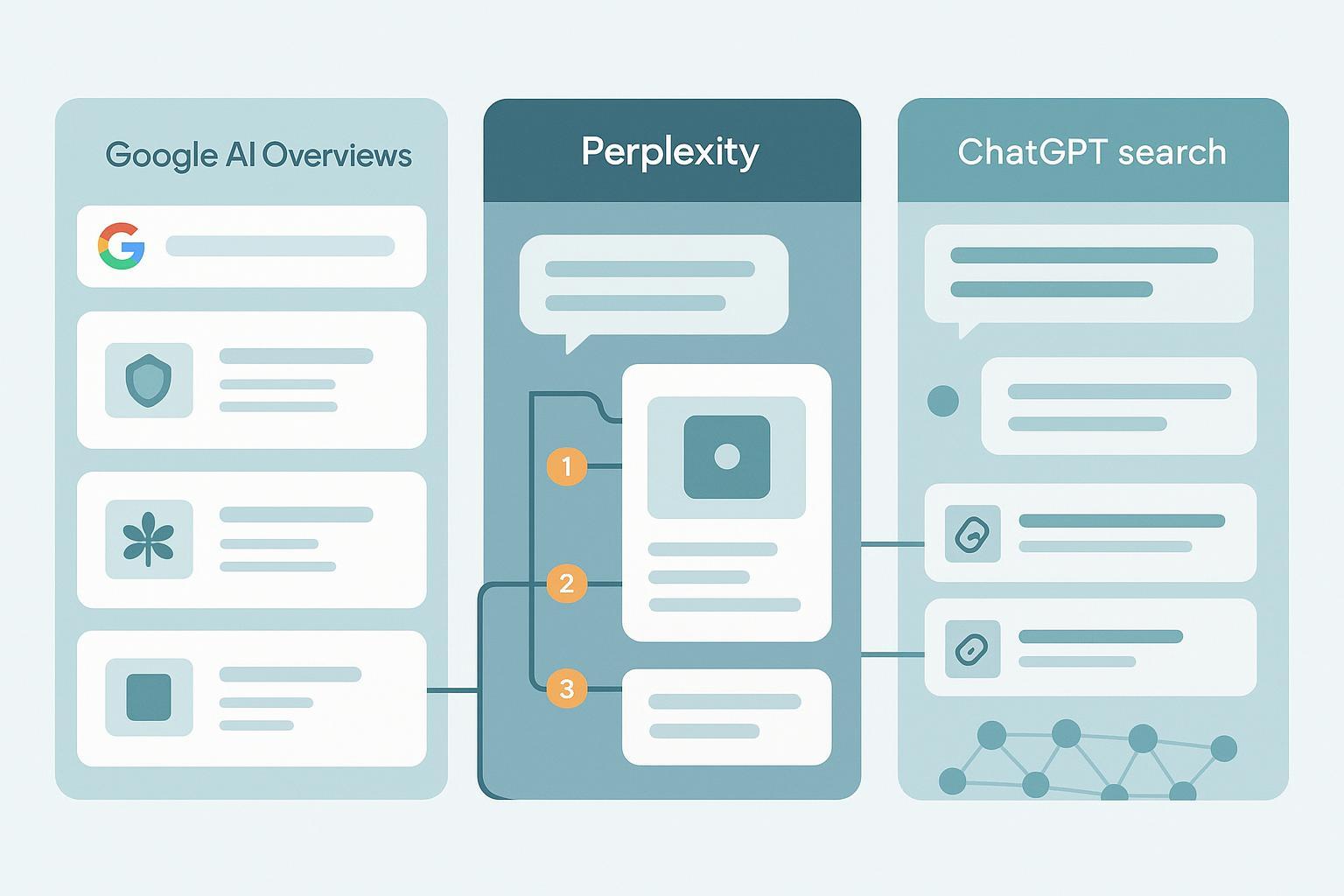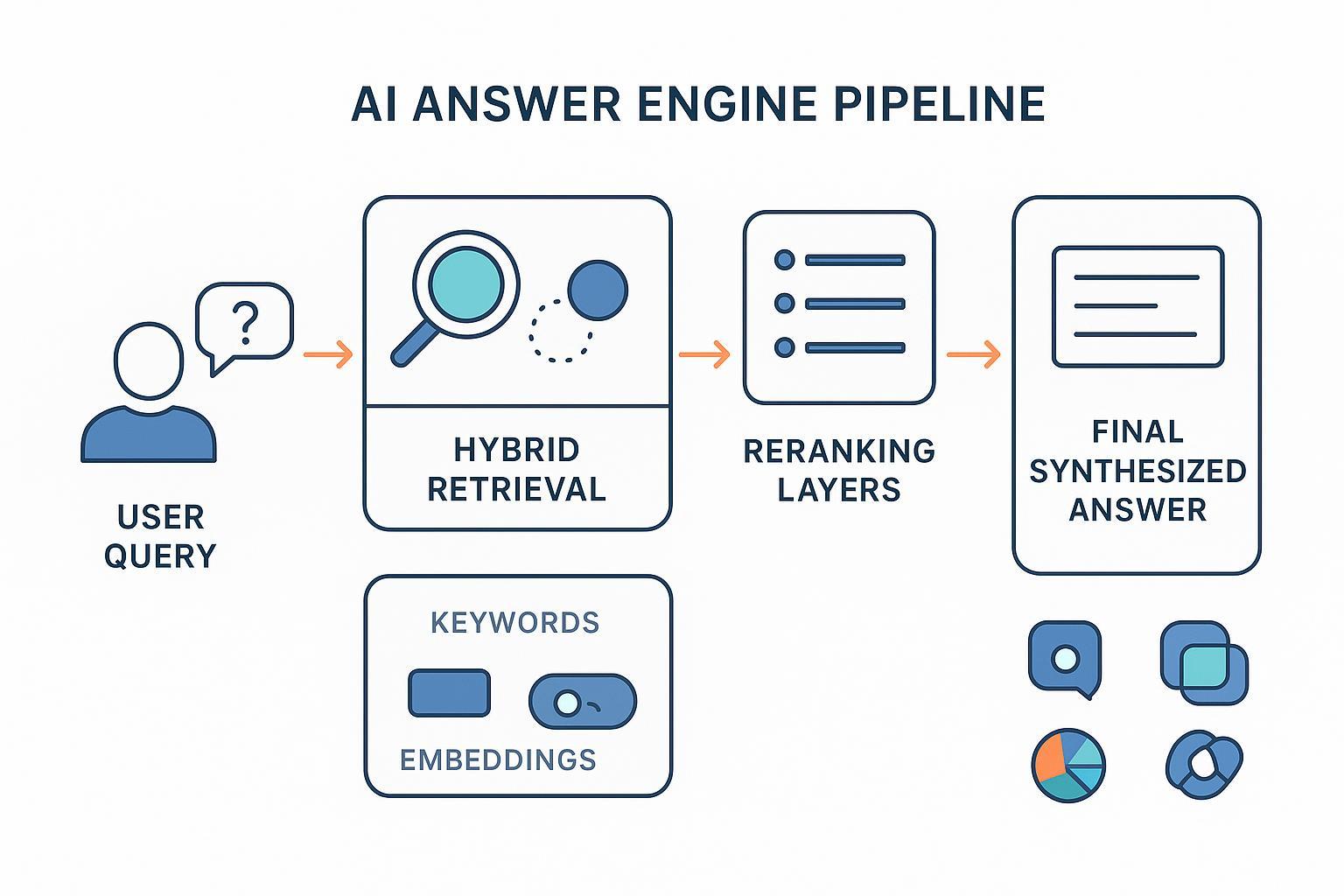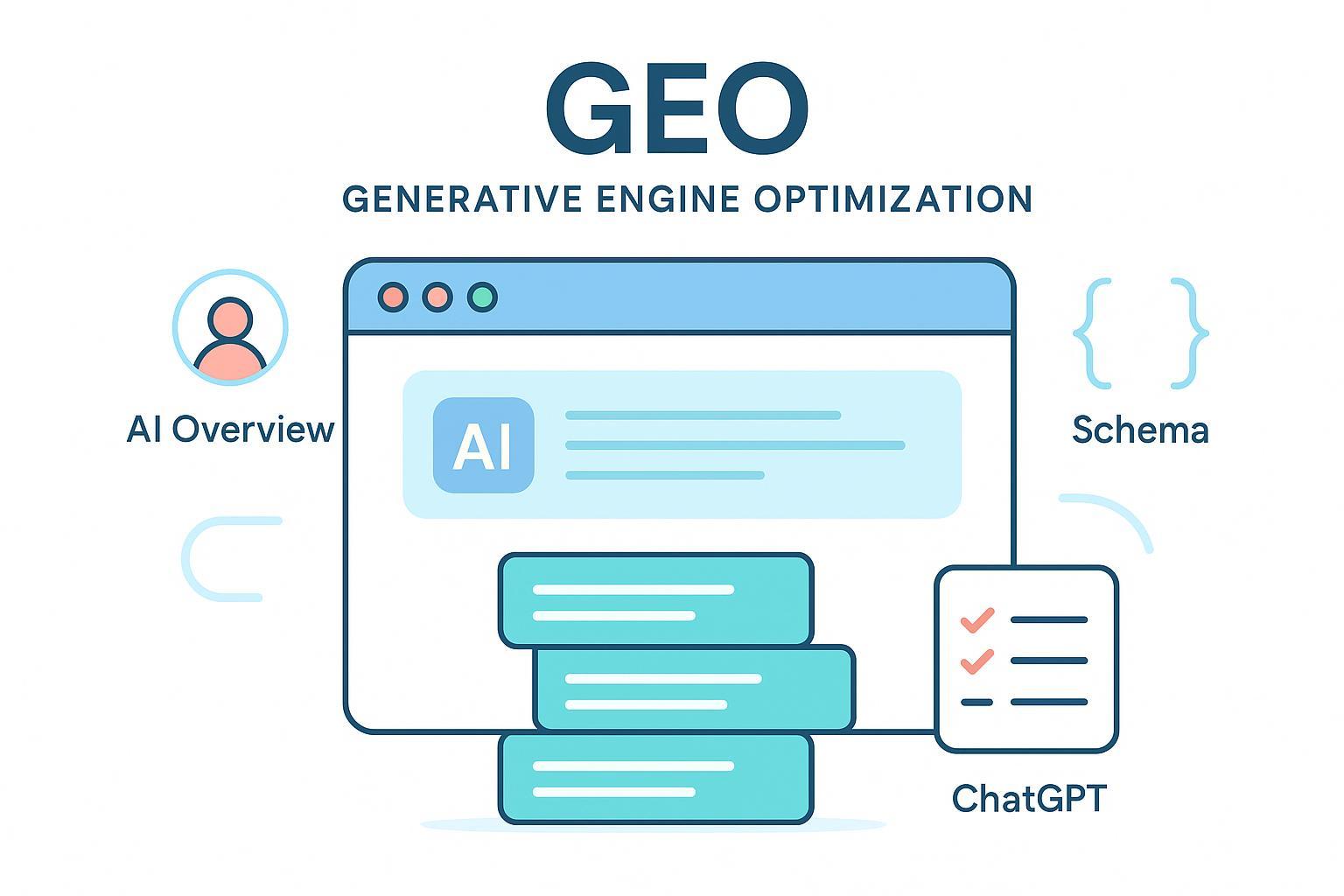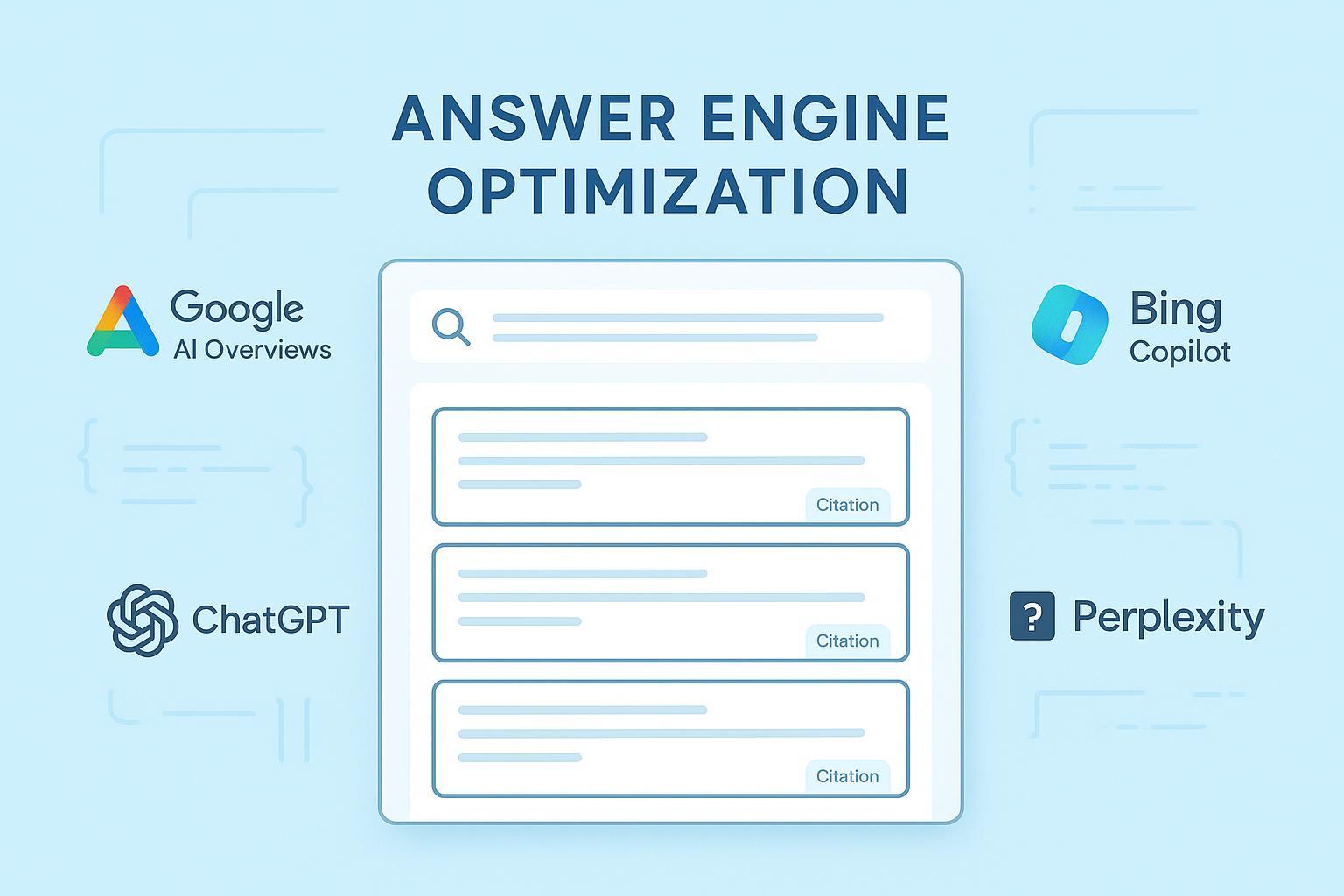Ultimate Guide to Generative Engine Optimization (GEO) 2025
Learn GEO—Generative Engine Optimization—with this 2025 complete guide. Master AI search visibility, GEO vs SEO, and tactics to lead in AI-driven search. Start optimizing now!

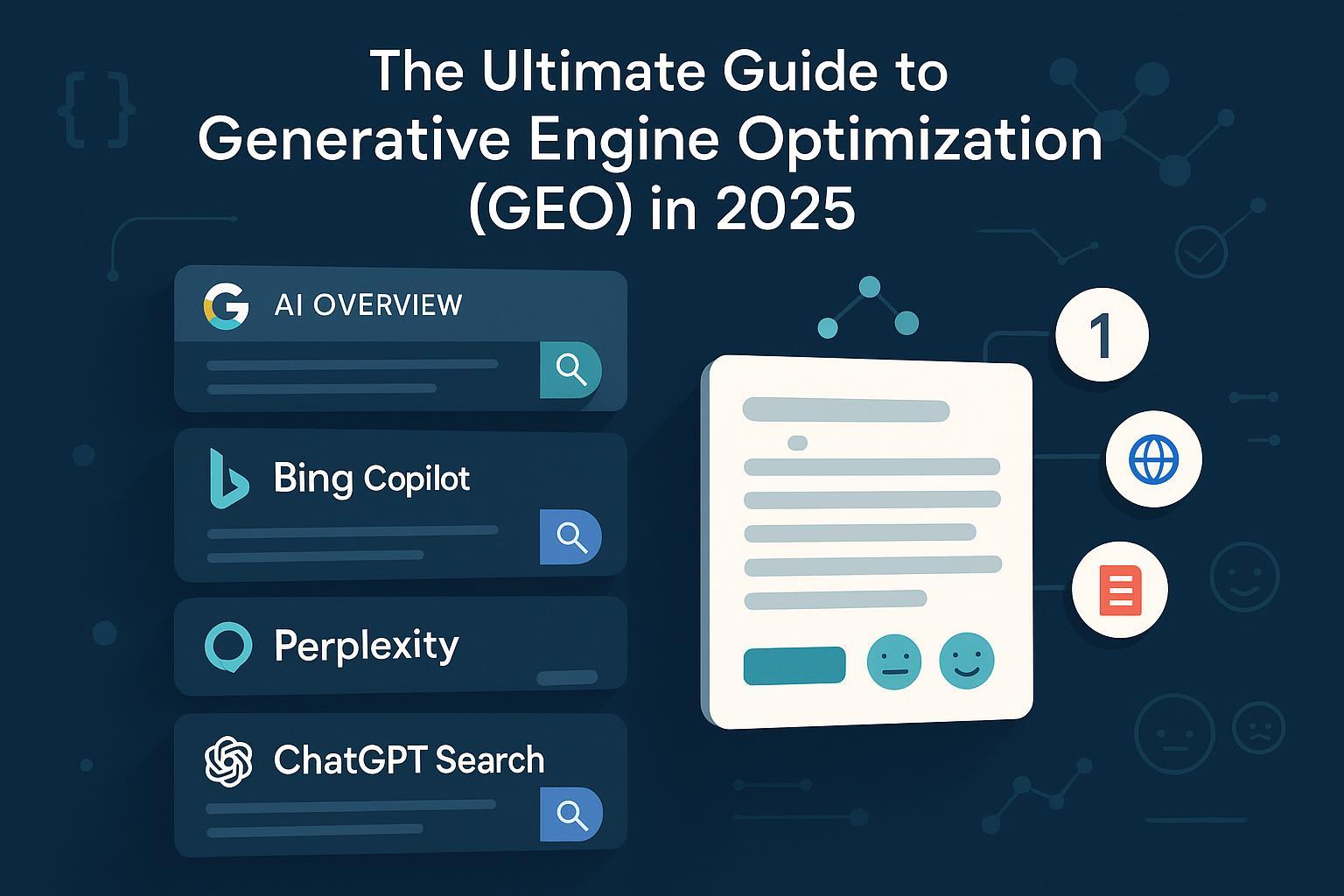
In 2025, AI-generated answers have moved from novelty to default. Google’s AI Overviews and AI Mode, Bing’s Copilot Search, Perplexity, and ChatGPT Search all present synthesized responses with citations, reducing the role of traditional ten-blue-links SERPs for many queries. That shift is why Generative Engine Optimization (GEO) is rapidly becoming the primary playbook for visibility. It doesn’t replace SEO everywhere, but for answer-first queries and discovery moments inside AI engines, GEO is where the battle is won.
What GEO Is (and Isn’t)
GEO emerged from academic work accepted at KDD 2024. In the original paper, the authors define GEO as a framework to improve content visibility within generative engine responses by optimizing for the signals these systems use to fetch, ground, and cite information. See the 2024 formulation in the GEO: Generative Engine Optimization (arXiv). The paper’s experiments show that content modifications guided by LLM prompts can measurably change visibility in generated answers.
Practically, think of GEO as: making your content easy for AI engines to recognize as authoritative, to ground answers with, and to cite. It focuses on entity clarity, provenance, structured data, and answer-ready formatting—so the AI response includes your brand or pages.
- GEO isn’t just “AI SEO.” It targets inclusion and attribution in AI outputs, not only organic rankings.
- GEO complements SEO. For transactional or navigational intent, classic SEO still dominates; for complex, research-like queries, GEO increasingly leads.
For a clear industry framing, compare how practitioners discuss GEO vs. SEO in 2024–2025 across reputable publications, such as Search Engine Land’s strategies explainer and Seer Interactive’s 2024 primer.
How Generative Engines Assemble Answers (2025 Overview)
Understanding how AI surfaces compose answers is the foundation of GEO. Here’s a high-level, evidence-based overview.
Google AI Overviews and AI Mode
Google’s own guidance (2025) describes how AI features in Search aim to surface diverse, high-quality content, with citations linking back to sources. Their webmaster docs confirm there’s no special opt-out beyond existing robots and meta controls. See Google’s official documentation in Search Central: AI features in Search and the May 2025 guidance on publishing for AI Search in “Succeeding in AI Search” (Google Search Central Blog, 2025).
Key behaviors to note:
- AI Mode can “fan out” a query into sub-questions, issuing multiple searches to build a synthesized answer, as described in Google’s 2025 product blogs on AI Mode updates.
- Citations are shown inline and link to source pages; selection aims for diversity and quality, not just top organic ranks.
Microsoft Bing Copilot (Copilot Search)
Bing’s Copilot blends generative summaries with a source list and inline citations (“Learn more”), offering publisher visibility and verification. Microsoft’s product blog (April 2025) details the approach; see “Introducing Copilot Search in Bing” (Microsoft, 2025), and their responsible AI support note summarizes transparency practices.
Perplexity
Perplexity uses live web retrieval with clear citations and emphasizes recency and credibility. Overviews from credible outlets like BuiltIn provide context; see BuiltIn’s “What Is Perplexity AI” (2024). Note that controversies exist: Cloudflare (2025) and Malwarebytes allege Perplexity ignores robots.txt with stealth crawlers; Perplexity’s docs state respect via PerplexityBot. Review both sides in Cloudflare’s 2025 post on undeclared crawlers and Malwarebytes’ 2025 analysis alongside Perplexity bots documentation.
ChatGPT Search
OpenAI introduced ChatGPT Search with real-time retrieval and prominent source panels in late 2024; updates continued into 2025. See OpenAI’s “Introducing ChatGPT Search” (2024) and release notes for ongoing behavior. Many industry analyses also document the interface’s citation visibility.
GEO vs Traditional SEO: The Practical Differences
- Objectives:
- SEO: rankings and traffic.
- GEO: citations and in-answer presence across AI surfaces.
- Signals:
- SEO: backlinks, technical hygiene, user behavior.
- GEO: entity recognition and disambiguation, authoritative sourcing, provenance (authors/org transparency), structured data, and answer-ready content.
- Formats:
- SEO: comprehensive pages, keyword mapping.
- GEO: concise Q&A blocks, tables, lists, and structured snippets designed to be quoted.
- Metrics:
- SEO: rankings, CTR, sessions.
- GEO: citation rate, share-of-voice in AI answers, sentiment distribution, linkback ratio, assisted conversions.
For deeper practitioner guidance, consult Search Engine Land’s GEO strategies (2025) and Seer Interactive’s explainer.
The 80/20 GEO Playbook: Five High-Leverage Tactics
These are the moves we see drive the majority of impact. Each includes practical steps you can reproduce.
1) Entity-First Authoring
Make your primary entity crystal clear and consistently referenced.
Steps:
- Define the core entity (brand, product, concept) and its related entities (people, places, categories).
- Use consistent naming and disambiguation elements on-page: include “about,” “mentions,” and external sameAs links to authoritative profiles (e.g., LinkedIn, Crunchbase, Wikipedia where applicable).
- Ensure unique, canonical pages for each entity with clear descriptions and machine-readable signals.
Why it matters: Generative engines rely on entity grounding. Clear, consistent entity signals help them include you as a trusted reference.
2) Structured Data and Schema
Implement detailed schema (Article, FAQPage, HowTo, Product, VideoObject) with properties like author, datePublished, about, sameAs.
Steps:
- Choose schema types appropriate to content purpose; nest FAQ within Article where useful.
- Include author credentials and org properties (logo, contact, sameAs) to strengthen provenance.
- Validate with structured data testing tools; fix errors before publishing.
3) Author Bios and Provenance Signals
Show expertise and transparency.
Steps:
- Add author bylines with qualifications; link to an author page.
- Maintain robust About and Contact pages.
- Cite primary sources inline with descriptive anchors.
4) Answer-Ready Formatting
Compose a direct, concise answer block early in the content.
Steps:
- In the first 40–90 words of a section, summarize the answer plainly.
- Use Q&A headings, bullet lists, and compact tables to make quotes easy.
- Include dates or version info for time-sensitive facts.
5) Freshness and Source Credibility
Keep facts current and cite authoritative sources.
Steps:
- Update data regularly; timestamp updates.
- Prefer primary documentation (official docs, peer-reviewed research) over summaries.
- Maintain editorial standards and legal review for sensitive topics.
For extended tactical context, practitioners often reference Search Engine Land’s GEO strategies (2025) and Semrush/Ahrefs technical guides for schema and entities.
Engine-Specific Tactics (Advanced)
Google AI Overviews and AI Mode
- Emphasize entity clarity and authoritative sourcing; Google’s 2025 guidance encourages diversity and high-quality citations.
- Use Article + FAQPage schema with rich properties; include “about,” “sameAs,” and detailed author organization markup.
- Provide compact, quote-ready answers near the top of relevant pages; include tables or lists where appropriate.
- Verify inclusion via manual checks and analytics; note that selection isn’t limited to top organic ranks.
Reference Google’s official documentation in AI features in Search (2025) and Succeeding in AI Search (2025).
Microsoft Bing Copilot
- Copilot displays a “Learn more” source panel; ensure your pages offer concise, authoritative explanations and provenance.
- Maintain Bing Webmaster Tools hygiene (sitemaps, crawl controls).
- Include FAQ/Q&A sections and clean HTML to improve quote extraction.
See Microsoft’s 2025 Copilot Search introduction for product behavior.
Perplexity
- Perplexity highlights recency and credible sources; keep content updated with clear timestamps and authoritative citations.
- Monitor crawling behavior; configure robots.txt for PerplexityBot and review server logs. Be aware of the 2025 controversy and plan controls accordingly.
Explore context in BuiltIn’s overview of Perplexity (2024) and balance with Cloudflare/Malwarebytes reports.
ChatGPT Search
- ChatGPT presents prominent links and source panels; prioritize succinct, evidence-backed sections that are easily quotable.
- Use structured data and clear author/provenance signals; maintain an up-to-date site map and machine-readable endpoints where applicable.
Official behavior overview: OpenAI’s 2024 announcement of ChatGPT Search.
Measurement and KPIs for GEO (2025)
You can’t manage what you don’t measure. Shift from rank-and-click to visibility-in-answer metrics.
Core GEO KPIs:
- Citation rate: Percentage of tracked queries where your brand/page is cited by the AI surface.
- Share-of-voice (SoV) in AI answers: Proportion of citations/mentions versus competitors across engines.
- Sentiment distribution: Polarity and tone of mentions in AI outputs.
- Linkback ratio: Links from AI surfaces or resulting coverage versus total links.
- Assisted conversions: Conversions where AI exposure plausibly contributed (multi-touch models).
Industry frameworks in 2025, such as Search Engine Land’s “new generative AI search KPIs”, propose additional measures like attribution rate in AI outputs or chunk retrieval frequency. For practical visualization of AI visibility and sentiment, see a real query report example: GDPR fines 2025 or a luxury smartwatch brands 2025 analysis.
Cadence:
- Weeks 1–12: Weekly monitoring and iteration.
- Thereafter: Monthly reviews; re-audit after major model/feature updates.
Troubleshooting and Risk Management
- Hallucinations or misattributions: Strengthen provenance (author credentials, org transparency), cite primary sources, and provide correction mechanisms.
- Schema errors: Validate JSON-LD; fix property omissions (author, datePublished, about, sameAs). Nest FAQ correctly.
- Brand safety and sentiment: Track negative mentions; respond with updated content and clarifications.
- Crawlers and opt-outs: Manage bots via robots.txt where desired. Official bot docs include OpenAI’s GPTBot instructions and Common Crawl notes on opt-outs.
- Perplexity crawling controversy: Balance server controls with monitoring; review Cloudflare/Malwarebytes claims and Perplexity’s stated policies.
Case-Style Micro-Examples (Process-Focused)
Example 1 — Entity and Schema Fix:
- Situation: A SaaS brand’s documentation pages weren’t being cited by AI engines.
- Actions: Consolidated entity references, added “about” and “sameAs” in Article schema, created an FAQ section with 6 concise Q&As, and added author credentials.
- Outcome: Within four weeks, manual checks showed consistent inclusion of documentation excerpts in ChatGPT Search panels for key queries.
Example 2 — Provenance and Answer Formatting:
- Situation: A consumer brand’s buying guide was long but not quote-friendly.
- Actions: Added a 70-word “direct answer” paragraph at the top, converted feature lists into a compact table, and timestamped the latest update.
- Outcome: Bing Copilot started citing the page in “Learn more” sources for comparative queries.
Tools and Workflows (Neutral Criteria)
When evaluating GEO monitoring and analytics tools, consider:
- Cross-engine coverage (ChatGPT, Google AI Mode/Overviews, Bing Copilot, Perplexity).
- Citation capture accuracy and frequency.
- Sentiment analysis capabilities.
- Historical tracking and trend visualization.
- Export/API for data integration.
- Team collaboration features.
Practical example — cross-engine citation verification workflow:
- Use Geneo to set up tracked queries across AI engines, monitor in-answer citations and sentiment, and review historical changes over time. Disclosure: Geneo is our product.
- For balance, teams also explore categories such as traditional SEO platforms adding AI KPIs, or social/listening suites with AI answer tracking add-ons. Apply the same neutral criteria above.
Your 90-Day GEO Rollout Plan
Phase 0 — Preparation (Week 0)
- Define target queries and entities; document goals and KPIs.
- Audit current content for entity clarity, provenance, structured data, and answer-ready formatting.
Phase 1 — Foundations (Weeks 1–4)
- Implement entity-first fixes and comprehensive schema.
- Add author bios, About/Contact enhancements, and direct-answer blocks.
- Set up monitoring across engines; baseline citation rate and SoV.
Phase 2 — Iteration (Weeks 5–8)
- Publish updates; validate inclusion via manual checks and monitoring.
- Address schema validation errors; refine Q&A blocks and tables.
- Start sentiment tracking and linkback ratio analysis; adjust content tone where needed.
Phase 3 — Scale and Governance (Weeks 9–12)
- Expand coverage to additional queries and content types (how-tos, product, local).
- Establish editorial standards and legal review; define correction processes.
- Integrate assisted conversion tracking in analytics; build dashboards combining GEO KPIs with engagement.
Next Steps
- Stand up an AI visibility monitoring stack to track citations, SoV, and sentiment across engines. Teams often evaluate purpose-built platforms like Geneo alongside existing analytics to cover measurement gaps.
- For continuing education on GEO and AI search visibility trends, explore the Geneo blog hub and compare approaches to AI brand monitoring in this contextual overview.
Why GEO Is Replacing SEO in 2025 (Without Discarding SEO)
Finally, the “why” behind the thesis. Multiple 2025 studies suggest that when AI Overviews appear, clicks to traditional results often decline—though magnitude varies by study and methodology. For example, Ahrefs (April 2025) reported a notable CTR decrease for position 1 on affected keywords, and Digital Content Next (May 2025) documented lower publisher clicks; Pew Research (July 2025) found users were less likely to click when an AI summary was present, while Semrush (July 2025) measured mixed changes in zero-click rates. These findings collectively explain why optimizing for in-answer visibility is increasingly critical.
- See the industry evidence in Ahrefs’ 2025 CTR study on AI Overviews, Digital Content Next’s May 2025 analysis, Pew Research’s July 2025 user behavior report, and Semrush’s July 2025 study.
The takeaway: GEO is not a fad. It’s a pragmatic response to how information is now discovered. SEO remains indispensable for many intents and ecosystems—but if your brand isn’t visible inside AI-generated answers, you’re invisible at the moment of synthesis.
References and Official Docs (Selected)
- Academic origin: GEO: Generative Engine Optimization (arXiv, KDD 2024).
- Google: AI features in Search (Search Central, 2025); Succeeding in AI Search (2025).
- Bing: Introducing Copilot Search in Bing (Microsoft blog, 2025).
- Perplexity: BuiltIn overview (2024); Perplexity bots documentation; Cloudflare post (2025); Malwarebytes analysis (2025).
- ChatGPT Search: OpenAI announcement (2024).
- Measurement frameworks: Search Engine Land’s new KPIs (2025).
If you implement the playbook above and track the right KPIs, you’ll have a clear, defensible path for winning visibility where AI engines synthesize answers—while keeping traditional SEO strong where it still matters.


